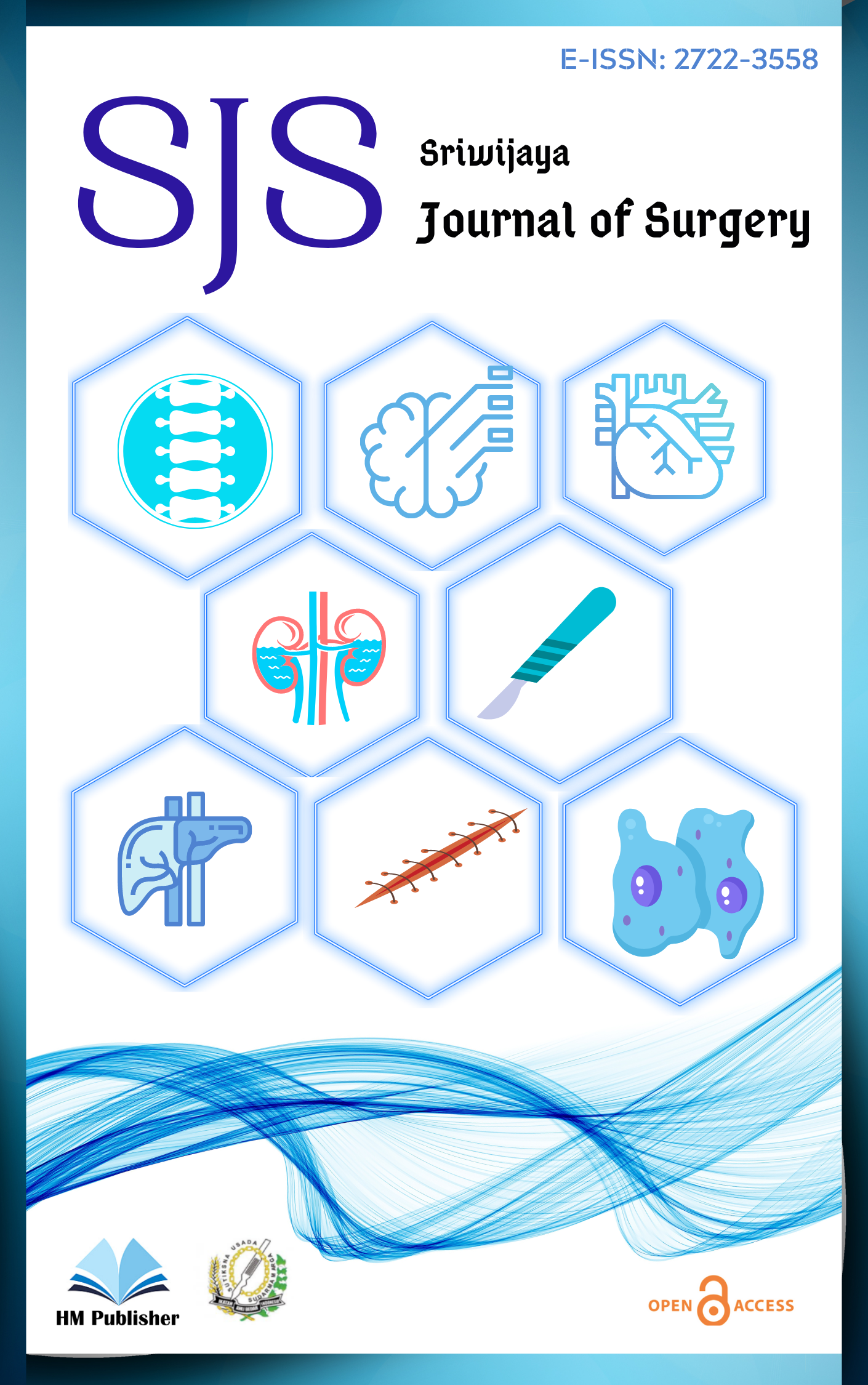Main Article Content
Abstract
tissue due to trauma. Severe head injuries account for about 10% of the total head injuries. In addition to death caused by severe head injury itself, head injury patients are susceptible to complications that can occur while the patient is hospitalized. The purpose of this study was to determine the correlation between the APACHE II Score on the mortality of severe head injury patients who were treated in the GICU room, Dr. Mohammad Hoesin Palembang. This type of research is a quantitative research using a retrospective analytical study survey design. Between group variables are unpaired because no matching is done. The research sample is 30 respondents. Results of analysis in this study, after statistical testing using the Chi Square test, p value < 0. 002 was obtained which clarified that there was a relationship between APACHE II Score and mortality in respondents with severe head injuries who were treated in the GICU, Dr. Mohammad Hoesin Palembang. Severe head injury in the GICU room, Dr. Mohammad Hoesin Palembang (p=0.002). The higher the patient's APACHE II score, the more likely the patient to leave the GICU dead. From a total of 30 respondents who were treated in the GICU room, the highest APACHE II score was 28 and the lowest was 3 the more likely the patient to leave the GICU dead. From a total of 30 respondents who were treated in the GICU room, the highest APACHE II score was 28 and the lowest was 3 the more likely the patient to leave the GICU dead. From a total of 30 respondents who were treated in the GICU room, the highest APACHE II score was 28 and the lowest was 3.
Keywords
Article Details
1. Authors retain copyright and grant the journal right of first publication with the work simultaneously licensed under a Creative Commons Attribution License that allows others to share the work with an acknowledgement of the work's authorship and initial publication in this journal.
2.Authors are able to enter into separate, additional contractual arrangements for the non-exclusive distribution of the journal's published version of the work (e.g., post it to an institutional repository or publish it in a book), with an acknowledgement of its initial publication in this journal.
3.Authors are permitted and encouraged to post their work online (e.g., in institutional repositories or on their website) prior to and during the submission process, as it can lead to productive exchanges, as well as earlier and greater citation of published work.

